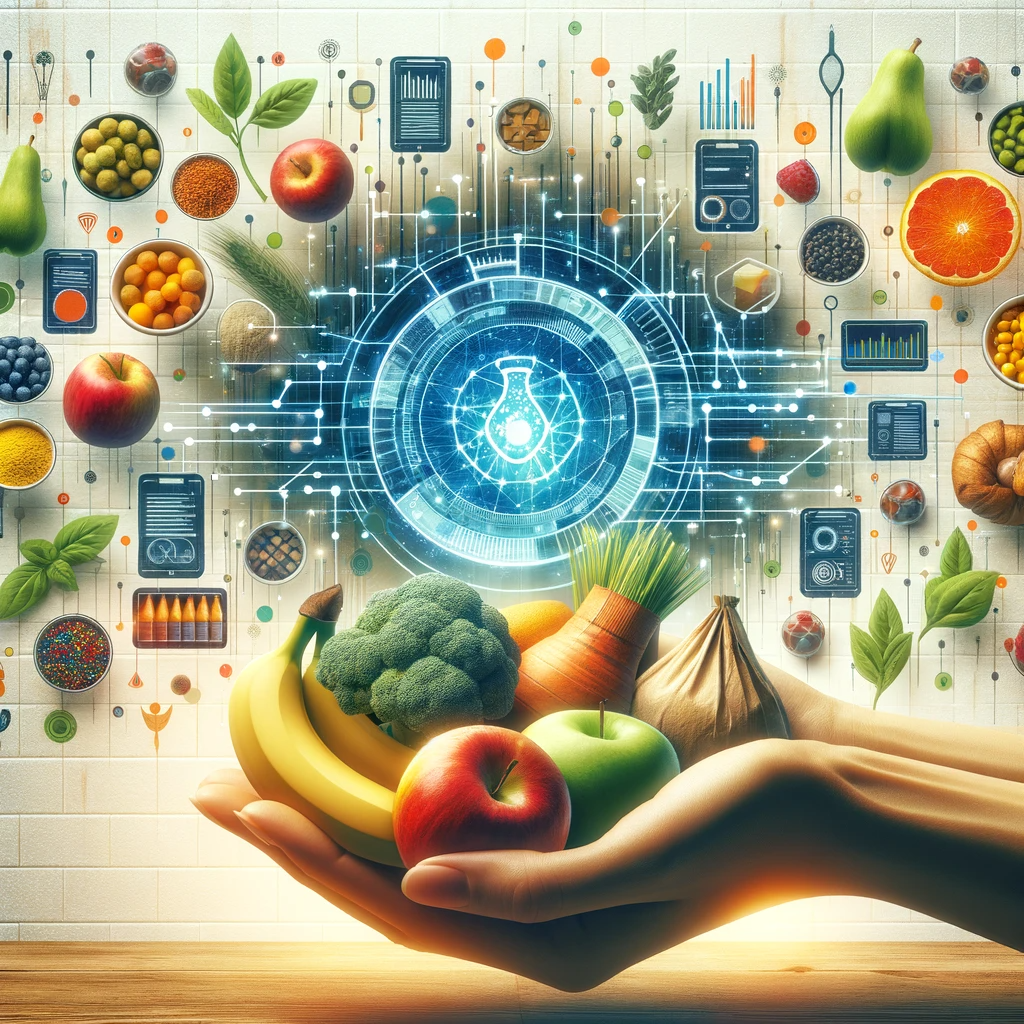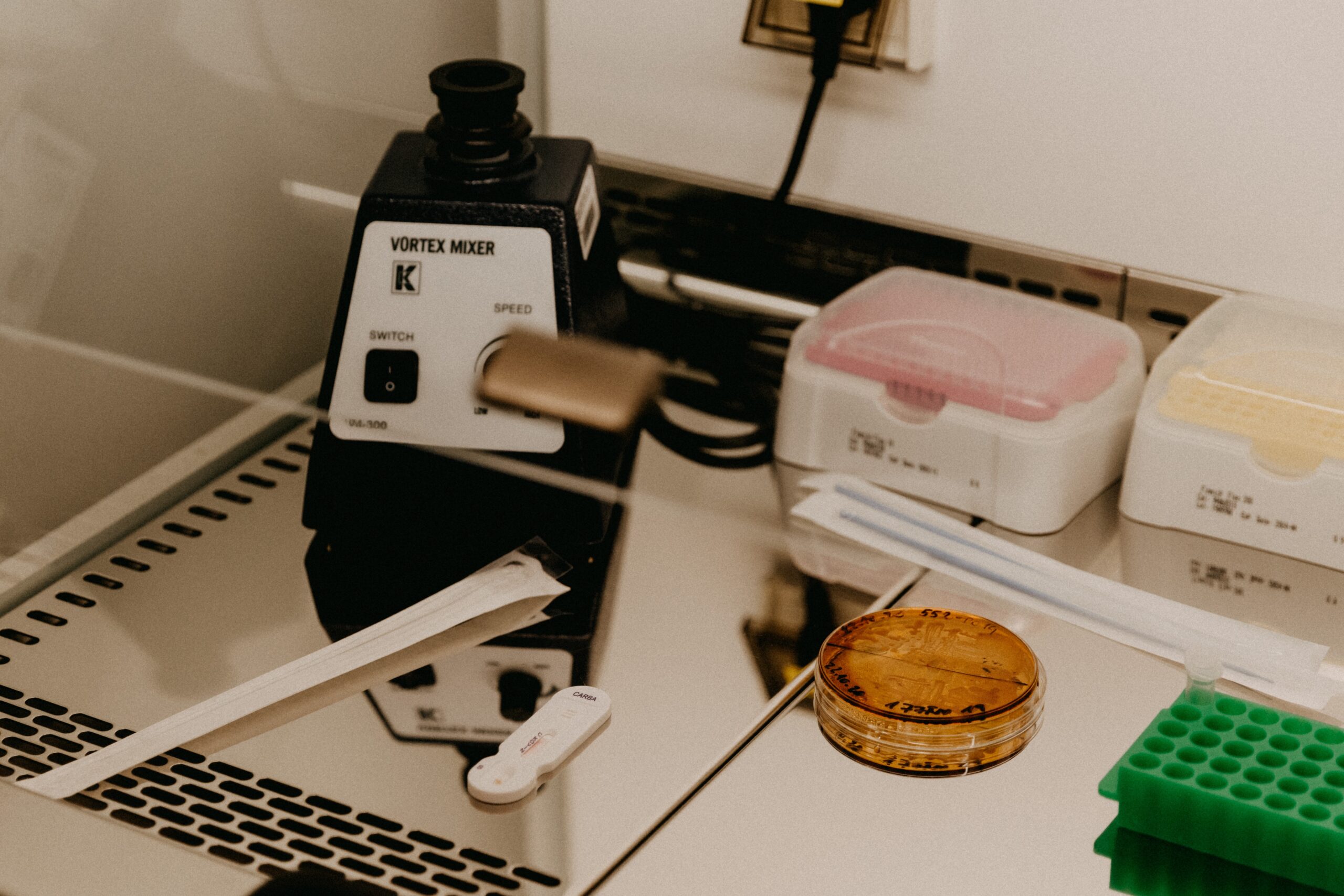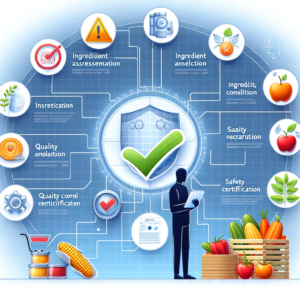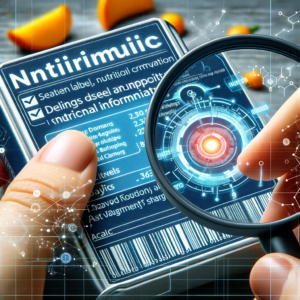Introduction

The food industry is currently experiencing a remarkable transformation, predominantly driven by the integration of data analytics in the form of Food Ingredient Analytics. This cutting-edge approach is revolutionizing how food businesses approach the quality, safety, and nutritional value of their products, aligning with heightened consumer expectations and stringent health standards.
At the heart of this transformation is Food Ingredient Analytics, a sophisticated application of data analytics that scrutinizes the quality and composition of food ingredients. This process spans a broad spectrum, including nutritional content analysis for assessing the nutritional value of food components, and advanced techniques for ingredient authenticity verification to confirm the genuineness of food components.
A key facet of Food Ingredient Analytics is its vital role in enhancing food safety. Advanced data analytics, allows for comprehensive food safety monitoring. This includes the analysis of potential contaminants like pesticides or allergens, which is essential in averting food safety incidents and safeguarding public health.
Moreover, Food Ingredient Analytics is indispensable for food quality control. This involves utilizing data analytics to ensure consistency in taste, texture, and quality across product batches. It also ensures food regulation compliance, addressing the challenge of meeting diverse standards across different markets.
In terms of nutritional analysis and labeling, Food Ingredient Analytics leverages data analytics to provide accurate nutritional content of food products. This is crucial in ensuring that food labels offer transparent and regulatory-compliant information to consumers about essential nutrients.
Additionally, Food Ingredient Analytics is a potent tool in food fraud prevention. In an industry where ingredient substitution or mislabeling is a concern, the application of data analytics helps verify ingredient authenticity, thus maintaining brand integrity and consumer trust.
Furthermore, the principles of sustainable food sourcing and food supply chain traceability are increasingly prioritized by consumers. Here, Food Ingredient Analytics, powered by data analytics, tracks the origin and journey of ingredients, supporting ethical sourcing and providing traceability from the farm to the consumer.
Food Ingredient Analytics, bolstered by the power of data analytics, marks a significant leap forward in the food industry. It transcends standard compliance, setting new benchmarks for food safety, quality control, and nutritional accuracy, leading to safer, more nutritious, and sustainable food choices.
What is Food Ingredient Analytics?
Think of Food Ingredient Analytics like the genius in the kitchen who knows exactly what goes into your food and why it matters. It’s a mix of science and smarts, using data analytics to keep an eye on everything from the sugar in your soda to the seasoning in your soup.
Getting to the Heart of Food Ingredient Analytics
1. Quality Assessment:
Imagine someone checking every apple or potato that lands in your grocery bag. Food Ingredient Analytics does that, but on a massive scale, ensuring every ingredient is top-notch.
2. Safety Verification:
It’s like having a food bodyguard. This process looks for anything that shouldn’t be in your food, keeping out the bad stuff so you can enjoy your meal worry-free.
3. Nutritional Analysis:
This is where those nutrition labels come from. Food Ingredient Analytics breaks down the details, so you know exactly what you’re eating and how it fits into your diet.
4. Regulatory Compliance:
It ensures that the food companies play by the rules, sticking to food safety laws no matter where they’re selling their products.
5. Ingredient Authenticity and Traceability:
Ever curious about where your food was grown or made? Food Ingredient Analytics tracks this journey, so you can trace your dinner back to its roots.
6. Data-Driven Decision Making:
This is where companies use the information to make smarter choices about what they put in their products, all thanks to data analytics.
7. Technological Integration:
This is tech meeting taste. With advancements like AI, it’s making food analysis smarter, faster, and more accurate.
Why Food Ingredient Analytics Matters to Us?
For you and me, it means eating food that we can trust. It’s about knowing our meals are safe, nutritious, and made with quality ingredients. For the food industry, it’s essential to keep up with our high standards and the ever-changing market.
In short, Food Ingredient Analytics is a big deal – it’s changing the way we think about what’s on our plates.
Enhancing Food Safety
Let’s chat about Enhancing Food Safety. It’s like having a vigilant, high-tech buddy in the food industry, all thanks to Food Ingredient Analytics. This isn’t just about making our meals safer; it’s about giving us the peace of mind that comes with knowing our food is well-checked and good to go.
How Food Ingredient Analytics Boosts Food Safety
1. Spotting the Bad Stuff:
Think of it as a super-smart detective in a lab coat, tirelessly looking for anything out of place in our food. Food Ingredient Analytics is ace at finding hidden nasties like pesticides or harmful bacteria, making sure they don’t end up in our lunch boxes.
2. Looking Out for Allergies:
For those with food allergies, this is like having a personal guardian. This technology helps pinpoint allergens, making grocery shopping and meal prep safer and less stressful.
3. Guarding Against Illness:
We’ve all heard scary stories about foodborne illnesses. Here’s where Food Ingredient Analytics steps up, using data to prevent these issues before they even start. It’s like having an invisible shield around our food.
4. Meeting Health Standards:
Different countries, different food rules. But no matter where you are, Food Ingredient Analytics helps ensure that the food you’re munching meets (and often beats) those safety standards.
5. Continuous Checks:
This isn’t a one-and-done deal. Continuous monitoring and testing are part of the package, kind of like regular health check-ups but for everything edible.
6. Tracing Troubles:
If something goes wrong, Food Ingredient Analytics can backtrack and find out where the problem started. It’s key in fixing issues and making sure they don’t happen again.
The Real Impact of Safer Food
At the end of the day, it’s all about trust. With Food Ingredient Analytics watching over our food, we can enjoy our meals with a little more ease and a lot less worry. For food producers, it’s about pride in serving up something that’s not just delicious but also super safe. So, enhancing food safety through Food Ingredient Analytics is like having a trusty sidekick for our daily eats – keeping us healthy, happy, and ready for another bite.
Nutritional Analysis and Labeling
Combating Food Fraud
Combating food fraud is a bit like being a detective in the culinary world. It’s all about ensuring the food we eat is genuine and not masquerading as something it’s not. With Food Ingredient Analytics playing a crucial role, this fight against food deception is essential for keeping our meals safe and authentic.
1. Uncovering the Hidden Truths:
Imagine buying what you think is a premium product, like extra virgin olive oil, only to discover it’s been mixed with cheaper, lower-quality oils. Food fraud is exactly that – a sneaky switch that can happen with various products. It’s a global issue, touching everything from spices to seafood.
2. A Global Challenge:
With food sources stretching across continents, tracking authenticity becomes a complex, worldwide task. It’s crucial for maintaining the integrity of global food markets and ensuring what we consume is the real deal.
3. Tech to the Rescue:
Modern technology steps in here, much like a high-tech tool in a detective’s kit. Techniques like DNA barcoding or chemical fingerprinting come into play, helping to verify the authenticity of food products.
4. Ensuring What’s on the Label Is What’s Inside:
It’s not just about avoiding health risks; it’s also about trust. When food fraud happens, it shakes our confidence in brands and products. Ensuring transparency and honesty in labeling is critical for maintaining consumer trust.
5. Staying within Legal Boundaries:
There are strict laws against food fraud, and for good reason. It’s not just about meeting industry standards but also about ethical business practices. Companies face significant consequences if caught in fraudulent activities.
6. Supporting Ethical and Sustainable Practices:
Tackling food fraud also aligns with promoting ethical and sustainable practices within the food industry. It’s about ensuring that the entire process, from farm to table, is honest and responsible.
Fighting against food fraud is much more than just a regulatory issue. It’s about ensuring that what we eat is honestly presented and safe, protecting both our health and our trust in the food industry. It’s a commitment from everyone involved in the food chain to uphold integrity and transparency.
Sustainable Sourcing and Traceability
Picture this: every time you bite into your favorite dish, there’s a whole backstory of where its ingredients came from and how they were handled. That’s exactly what we dive into with sustainable sourcing and traceability in the sphere of Food Ingredient Analytics. It’s more than just technical jargon; it’s about making a real connection with our food.
Sustainable sourcing is like the food industry’s promise to do right by the planet and its people. It’s about choosing ingredients that come from places where they’re grown with respect for the earth and those who farm it. It’s about mindfulness in what we consume.
And then, there’s traceability. Imagine being able to trace the journey of every ingredient in your meal, like a story unfolding from farm to fork. It’s about knowing the path your food has traveled and feeling good about it. It brings a whole new level of transparency and trust to what we eat.
Merging these ideas with the smart wizardry of data analytics, Food Ingredient Analytics becomes our window into a world where food isn’t just about taste, but also about ethics and care. It’s how we’re bridging the gap between high-tech tools and the everyday choices on our plates.

Food Ingredient Analytics
1. Sustainable Sourcing in Food Ingredient Analytics
Sustainable Sourcing refers to the practice of procuring ingredients in a way that minimizes environmental impact, supports fair labor practices, and ensures long-term ecological balance. The role of data analytics in Food Ingredient Analytics is crucial for identifying and verifying sustainable practices across the supply chain, and analyzing vast amounts of data related to farming practices, resource use, and carbon footprint.
2. Traceability in Food Ingredient Analytics
Traceability in the food industry means having a detailed record of each step in the food product’s journey, from its origin through processing to its final point of sale. This aspect of Food Ingredient Analytics is vital for food safety, allowing for rapid response in case of contamination or food-borne illness outbreaks, and building consumer trust as people are increasingly interested in the story behind their food.
3. Technological Integration in Food Ingredient Analytics
Technological tools like Blockchain are particularly promising for enhancing traceability. Blockchain can create an immutable record of transactions, making it easier to track and verify the journey of food products. AI and Machine Learning are also critical in Food Ingredient Analytics for predicting and optimizing supply chains, making them more efficient and sustainable.
4. Benefits of Sustainable Sourcing and Traceability
The benefits of sustainable sourcing and traceability in Food Ingredient Analytics include the reduced ecological footprint of food production, ensuring fair trade practices, supporting local communities, and strengthening consumer confidence in food products.
5. Challenges in Sustainable Sourcing and Traceability
Challenges in sustainable sourcing and traceability include the complexity and cost of managing global food supply chains and the significant task of collecting, managing, and analyzing the vast amounts of data required for effective traceability.
6. Future Trends in Food Ingredient Analytics
Future trends in Food Ingredient Analytics indicate an increase in transparency in food sourcing and supply chains and a rise in consumer demand for sustainably sourced products, which will drive more innovation and compliance in this area. Regulatory aspects are increasingly focusing on traceability for food safety and quality assurance, with sustainability certifications like Fair Trade and Organic playing a crucial role in verifying sustainable practices.
So, sustainable sourcing and traceability, enhanced by Food Ingredient Analytics and data analytics, are essential for corporate responsibility and consumer trust in the food industry. They represent a significant shift towards more ethical, transparent, and environmentally conscious food production and distribution.
Innovative Product Development
A Fresh Take on Food Through Data Analytics
When it comes to whipping up new food products, there’s a lot more involved than just a chef’s intuition. This is where Innovative Product Development comes into the picture, tightly intertwined with Food Ingredient Analytics. It’s all about using data to make smarter decisions in the kitchen and the lab.
First off, we’re talking about really getting into what people want to eat and what’s good for them. With data, food creators can tune into trends like never before, whether it’s for health, taste, or the environment. It’s like having a crystal ball that tells you what flavors are going to be a hit, or what kind of diet plans are gaining traction.
Then there’s the personalized touch. Imagine food that’s tailor-made just for your dietary needs. That’s becoming more and more possible thanks to data. Whether you’re an athlete needing a protein boost, or someone with specific food allergies, the future of food is all about personalization.

Sustainability isn’t just a nice-to-have anymore; it’s a must-have. Here, Food Ingredient Analytics shines, helping to churn out foods that are friendly to our planet. It’s about finding ingredients that don’t tax the earth and figuring out ways to reduce waste and carbon footprints.
And let’s not forget about taste – the king of food innovation. Data analytics is like a secret ingredient, helping to experiment with new flavors and textures. It’s a bit like being a food explorer, discovering uncharted territories of taste.
Health is also front and center in food innovation. Reducing sugar, cutting down on sodium, packing in more vitamins – it’s all on the table with data-driven insights.
Of course, all this innovative work in food wouldn’t get off the ground without a little help from modern technology. Think of Artificial Intelligence and machine learning as the behind-the-scenes kitchen wizards. They’re the ones quietly and efficiently working away, helping to whip up these new products quickly and ensuring they’re just what the customers are craving.
Finally, keeping up with regulations is a big deal. No one wants a great food idea that doesn’t play by the rules. That’s where analytics helps, ensuring everything from the ingredient list to the nutritional info is up to snuff.
The world of Food Ingredient Analytics is like a playground for food innovators. It’s about blending science, technology, and culinary art to bring out food products that are not just new on the shelf but also what people want to eat and feel good about.
Conclusion
As we wrap up our exploration of Food Ingredient Analytics, it’s evident that this technology is much more than a trend. It’s a revolution in how we interact with our food – from farm to table. Food Ingredient Analytics has shown us a new way to view food safety, quality control, and even how we develop new, exciting products. At every step, data analytics has been the guiding light, offering insights that were once hidden in the complexities of food science and market trends.
What truly stands out is the level of trust and transparency that Food Ingredient Analytics brings to our dining tables. It’s incredibly comforting for us, as everyday people who care about what we eat, to know that our food is not just safe and nutritious but also comes from a place of ethical responsibility. Food Ingredient Analytics gives us that peace of mind.
For the folks in the food industry, Food Ingredient Analytics is more than just another piece of technology—it’s a prompt to step up their game. It’s inspiring them to be more creative, more conscious about their impact, and to reconsider the way they’re sourcing ingredients and crafting their products. It’s about making sustainability and ethical practices a core part of their mission.
Looking ahead, Food Ingredient Analytics and data analytics will continue to shape the food industry. They are not just tools for today but investments in our future – ensuring a food landscape that’s healthier, more sustainable, and in tune with our evolving lifestyles.
In closing, Food Ingredient Analytics isn’t just changing how food is made or consumed; it’s nurturing a future where every meal is a reflection of care, science, and sustainability – a true testament to how technology can harmonize with our basic human needs.




